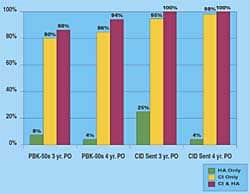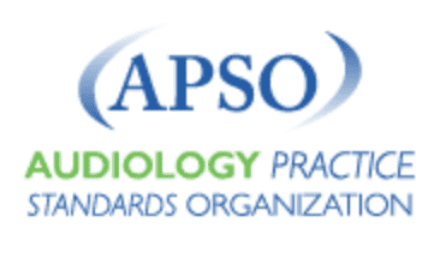Regular staff meetings can be a terrific vehicle in getting all the people in an office/practice committed to a set of well-defined objectives. Planning meetings, goals and standards meetings, and training meetings are all examples of ways to get staff members pulling in one direction. However, productive staff meetings aren’t easy; they take preparation and practice. Setting the tone, agenda, and parameters for each meeting, providing follow-up and action items, and keeping the meeting positive can make your staff conferences tremendous—
as opposed to tedious.
Many meetings—particularly staff meetings—start with the best intentions, but can progress into what many might call “a waste of time.” Often, a practice wants to accomplish so much that its meetings tend to have overly inclusive agendas, causing them to run on and on. In the end, much information is shared; however, the good ideas and good will generated doesn’t always turn into change for the better.
Wasted time is wasted effort is wasted money. If you are a practice owner or manager, it is critical that you ensure that the time you and your staff devote to staff meetings is productive. Equally important, meetings attended in an enthusiastic spirit instead of in one of dread and boredom can ensure a greater contribution to the practice.
Tapping into the Potential of Your Staff
Meetings are wonderful mediums for tapping into the expertise that your staff brings to the job. One word can describe this: empowerment! Staff meetings can provide information, guidance, training, and motivation for workers that instill in them confidence and increased professionalism to do their jobs better. Successful practice owners and managers know the potential of an empowered team.
Meetings are also effective ways to involve the staff in planning for the future. They can be used, too, to divide goals into smaller units, increase accountability, and focus on specific issues that affect practice performance. Meetings can give visibility to staff accomplishments, which encourages and stimulates emulation. Meetings are excellent venues for sharing praise and rewarding work that is done well.
In short, getting your staff “in the know” and making their work more visible and appreciated increases morale, efficiency, productivity, and profitability.
Types of Meetings
There are a variety of types of meetings, and within the framework of a weekly or bimonthly staff meeting that you create, you can include elements from each of them. Each has a specific purpose, technique, and outcome.
Planning Meeting: The strategic and operational planning meeting is a great place to start when a practice begins to conduct regular staff meetings. In this meeting, a practice owner or manager can introduce “change” and present goals of the practice. Topics can include a review of policies, procedures, resource allocation, market trends, and division of labor within the practice. In addition, quality of care and efficiency issues play a prominent role in this meeting, along with hearing aids dispensed and procedures used.
The road map for where the practice wants to go may be created by ownership and management, but who better to involve in planning on how to get there than your staff? They will appreciate being involved in such an important process.
Goals & Standards Meeting: One of the most useful types of staff meetings is one that establishes goals that the owner or manager wants to accomplish. If you are holding bimonthly meetings, the one at the beginning of the month can review sales for the prior month, appointments, re-call and referral activities, and promotion successes. The meeting may then turn towards activities for the current month, setting goals and expectations for each staff member to meet the demands of the practice. Related training should be planned, as necessary.
The mid-month meeting can then compare progress to-date toward the goals set at the previous meeting. If ahead, congratulate and appreciate. If behind, discuss the tactics needed to get back on course.
Problem-Solving Meeting: Staff meetings can be used to discuss patient or practice problems, issues, and concerns. The problems must be clearly defined and discussed, and the meeting should focus on solutions.
One result might be establishing or improving “boundaries” and authorizing staff to make decisions in certain situations. This gives empowerment. The meeting should offer ideas of how a particular problem can be addressed, resolved, and avoided in the future.
The “problem-solving meeting” is used to focus on a specific difficulty, which can be addressed, discussed, and resolved. The result may be that you and your staff build a better mousetrap, improving either productivity or efficiency. Typical issues that can be addressed include:
- Office procedures;
- Scheduling problems;
- Billing and collections
- Order fulfillment; new orders, repairs, and exchanges;
- Traffic flow and patient service issues.
Informational Meeting: Sometimes this is referred to as the “general housekeeping” meeting. This is an ideal format to announce or present results, future and current marketing events, and new policies and forms. Generally, items here are final versions of items discussed at previous meetings. These types of topics may also serve as the preamble to any staff meeting. They get the meeting started, set its tone, and quickly cover ground that everyone needs to be aware of.
Team-Building Meeting: This type of meeting can be used as a method of integrating new staff and energizing all staff. Its purpose is to increase the ability of a group to work together as a team by identifying things that are working, citing areas for improvement, building on strengths, resolving problem areas, and developing a joint development plan for ongoing effectiveness. Typical outcomes of a team building meeting include:
- Commonly accepted mission and vision;
- Shared goals;
- Problem-solving and decision-making strategies;
- Agreement on a plan and its implementation;
- Increased motivation and commitment.
Brainstorming Meeting: No practice can afford to rest on its laurels, for the economy and consumer are changing all the time. Practices must be creative in continuing to serve the hearing impaired and in getting more customers to choose them as their provider.
The purpose of a brainstorming meeting is to produce new ideas about a specific topic(s). The best parts of the meeting can then be coalesced into a “best practice” or an acceptable course of action for the practice. Here are some general guidelines for a successful brainstorming meeting:
- The atmosphere should be loose and informal;
- All opinions should be accepted; no idea is too outlandish;
- A facilitator should be appointed to control the flow of information;
- Someone should take minutes to record ideas;
- A target date should be established to implement the ideas.
Training Meeting: Staff must be trained to perform effectively. It is paramount that they be adept at handling price inquires on the telephone, tracking the business, scheduling, basic hearing aid technology, and patient and physician referral procedures, just to name a few.
A variety of resources is available to assist you in this type of meeting, including manufacturer representatives, your peers, and practice management groups. American Hearing Aid Associates (AHAA) devotes much of its efforts to providing staff training for its network members nationwide and has myriad resources available to help in this area.
Whatever resource you use, keep the training upbeat. Training sessions require a positive ambiance, and the facilitator should be able to communicate the benefits of the training to the participants in a positive way. When people feel they are learning something that will help them and the information is presented in a positive environment, the learning comes easy and lasts longer. In the end, providing knowledge about how to do the job enhances performance.
Getting Started
Ultimately, the frequency, duration, and tenor of the meeting are up to you. However, our experiences with practitioners in the field lead us to advocate a specific format. For example, effective staff meetings are conducted in some regular pattern. For larger practices with multiple offices and large staffs, weekly or bimonthly meetings may be best. For smaller practices, a bimonthly schedule may be adequate to cover what needs to be addressed. Meetings should last between 30 -60 minutes. If more time is needed, consider a staff retreat, where more energy and time can be dedicated to the process.
Conducting the Meeting: Whatever your meeting schedule or type, the scheduled time should be sacrosanct; that is, a “no or minimal interruptions” rule should be enforced. Tolerate nothing that buzzes, rings, or beeps. If meetings are held at lunchtime, close the office. Or they could be held before or after regular practice hours. Consider applying the following ground rules for meetings:
- Stress that candor and confidentiality are important;
- Challenge ideas, not persons;
- Accept that time management is critical;
- Set the criteria for measuring the meeting’s success.
At the start of every meeting, ask the attendees if they know the purpose of the meeting. Resolve any questions.
Having an Agenda: Every staff meeting should have a set, written agenda distributed in advance. Sample agenda topics include reviews and reports on goals and tasks set at previous meetings, introduction of changes in procedures, discussion of current practice operations, discussion of current promotional or marketing activity, and presentation of a training topic. The person who conducts the meeting outlines the agenda at the start of the meeting. Consider a one-page form for the agenda that is used for every meeting. On the agenda, create sections for tracking information, follow up from the previous meeting for assigned written duties, and follow up from previous meetings.
Staff may be given “assignments” ahead of time. This ensures that the meeting is efficient and effective. It also increases active participation and contribution during the session and fosters accountability in your staff. Examples of such assignments include compiling patient and marketing/ad tracking data, identifying referral sources, presenting ideas or suggestions for the next promotion, conducting patient surveys, or tackling a specific patient need.
Make Your Meetings Productive!
Staff meetings can help nearly every practice continually improve and thrive in its marketplace. When executed with some planning and thought, more frequent, focused meetings of shorter duration can help foster meaningful change. They force staff to present their ideas and assignments in a clear and concise fashion, and having only one or two topics to present makes the deadlines more pronounced. Subsequently, more gets accomplished. The attributes of good meetings include:
- Holding them at regular intervals with few, if any, interruptions;
- Being prepared with an agenda and meeting goals
- Assigning accountability to staff for achieving goals set at meetings;
- Tracking results and outcomes of the meetings;
- Always reviewing previous meeting decisions;
- Setting expectations for the next meeting.
In the end, the practice benefits from team cohesiveness, improved skill sets, creative solutions, great ideas, and a venue to share the strategies and successes of the practice. w
Acknowledgement
This article is based on materials presented at the AHAA Annual Convention in Las Vegas, February 2003.
Correspondence can be addressed to HR or to Roger McGuire, American Hearing Aid Associates, 1380 Wilmington Pike, West Chester PA 19382; email: [email protected].


|





